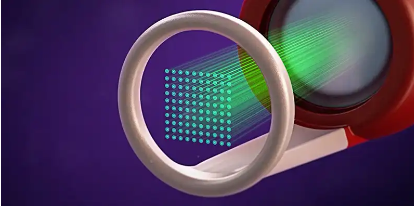December 6, 2024
Meet the picosecond laser machine intentionally designed to work from the inside out.
With this remarkably innovative picosecond laser, you can:
- Significantly improve acne scars and wrinkles with a series of quick, 20 minute treatments, with low downtime.
- Treat benign pigmented lesions with 50% clearance after two treatments (96% of treated discolorations) across a range of skin types (Fitzpatrick Types II-V).
- Treat a wide range of tattoos. Even difficult-to-treat blue and green tattoos.
- Treat melasma, nevus of Ota, lentigines and cafe au lait macules (CALMs).

HOW IT WORKS
PicoWay Resolve and PicoWay Resolve Fusion are micro-beam treatments. These
low-downtime treatments are popular for addressing acne scars, wrinkles, and
benign pigmented lesions.
What is better PicoSure or PicoWay?
- If you’re seeking a solution to address acne scars, wrinkles, and melasma, it’s time to discover the benefits of picosecond lasers!
- PicoWay stands out as a leading choice among picosecond laser technologies for both skin revitalisation and tattoo removal.
- With shortened pulse durations, it minimises skin burns while maximising effective skin restoration.
PicoWay vs PicoSure: How Do They Work?
Let’s compare functionality across three different categories: power, wavelength, and pulse duration. Each of these laser characteristics has a significant effect on your skin and the efficacy of your chosen treatment.
- Power
With great power comes more laser penetration. For tattoo removal, a higher peak power means more effective removal as it will be more effective at blasting ink pigment into particles the body can absorb.
PicoWay is the winner with a peak power of 0.9 GW, while PicoSure has maximum power at less than 0.36 GW.
- Wavelength
The number of wavelengths in a picosecond laser determines how much pigment it can purge. Picosecond lasers use nanometres (nm) as the unit of measurement to calculate wavelengths.
Here are the wavelengths available for PicoSure and PicoWay:
Picosecond Laser | Wavelength (in nanometres) |
PicoSure | 532 nm (handpiece), 755 nm and 1,064 nm (handpiece) |
PicoWay | 532 nm, 785 nm and 1,064 nm |
Key differences in Wavelengths:
PicoWay operates at full speed and power at three wavelengths. In addition to producing the 755 nm wavelength, PicoSure converts it into 532 nm and 1064 nm using its laser pump handpieces.
The conversion process results in some loss of energy and effectiveness.
- Pulse Duration
Pulse duration measures time and how fast a picosecond laser operates—a lower number signifies that the laser operates faster. Picoseconds (ps) are used to measure speed, with 1000 ps being equal to 1 nanosecond.
Faster lasers rely less on heat, which is desirable because heat is generally less effective and more likely to damage the skin. Instead, through this increased speed, they generate a photoacoustic shockwave to do the work.
The pulse durations of PicoSure and PicoWay are as follows:
Picosecond Laser | Pulse Duration |
PicoSure | 550 to 750 ps at native 755 nm wavelength |
PicoWay | 375 ps at 532 nm, 300 ps at 785 nm, and 450 ps at 1,064 |
- PicoWay vs PicoSure for Hyperpigmentation
Hyperpigmentation, including age spots, melasma, and post-inflammatory trauma, disrupts the skin’s colour balance, leading to dark spots scattered across the body.

